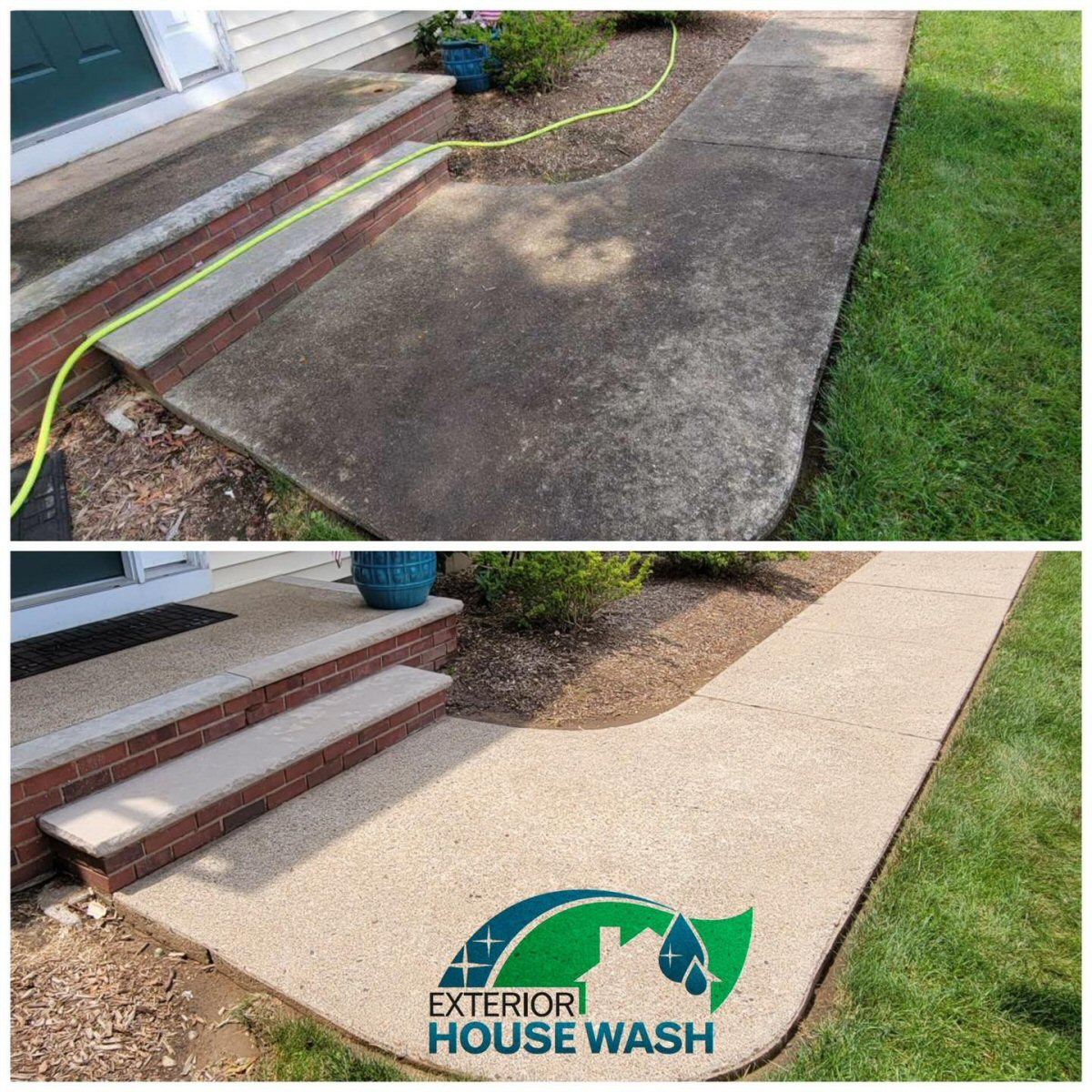Comprehensive FAQs About Pressure Washing: Your Essential Guide
Pressure washing is a highly effective method that involves spraying water or a specialized cleaning solution at high pressure to eliminate stubborn contaminants and dirt from a variety of surfaces and objects. Whether you’re tackling the facade of your house or cleaning gritty concrete walkways, a quality pressure washer can swiftly eradicate layers of dirt, mold, mildew, mud, and other stains. But what is the science behind pressure washing, and how does it truly function?
Understanding how to use a pressure washing system properly is crucial. What pressure and flow rate should you aim for? How can you effectively clean house facades or concrete driveways without causing any damage? This detailed guide will address these frequent questions to ensure you have all the necessary information.
Selecting the Right Equipment for Effective Pressure Washing
Before embarking on your pressure washing journey, it’s essential to understand how to select the appropriate equipment tailored for the task. While professionals often utilize industrial-grade pressure washers, there are also many consumer-friendly options available that are perfect for DIY projects. Choosing the right model can significantly impact your cleaning efficiency and safety during the process.
Understanding PSI and GPM for Optimal Pressure Washing
Two critical specifications that every user must grasp are:
- PSI (pounds per square inch) – This measurement indicates the water pressure. Typical household pressure washers usually operate within a range of 1300 to 3000 PSI. Higher PSI values generally offer increased cleaning power, making it easier to tackle tough stains.
- GPM (gallons per minute) – This metric assesses the water flow rate. Common flow rates for home use fall between 1.5 and 4 GPM. A higher GPM can significantly reduce cleaning time, making your efforts more efficient.
Achieving the right balance between PSI and GPM is essential to avoid surface damage while still effectively keeping surfaces clean. Understanding these parameters will help you choose the best setup for your specific cleaning needs.
Exploring Different Types of Pressure Washers Available
Pressure washers come in two primary types:
- Electric – These models are generally less powerful but more budget-friendly for homeowners, typically offering between 1300 to 1800 PSI.
- Gas – These are powered by gas engines and can deliver significantly higher outputs, often exceeding 2800 PSI, and they allow for greater mobility without being tethered to a power outlet.
Electric pressure washers serve as excellent entry-level options for those embarking on DIY projects, while gas models provide superior cleaning power for larger and more challenging jobs. It’s important to consider your specific needs and budget when making a selection.
Choosing the Right Nozzle Types for Effective Pressure Washing
The nozzles attached to pressure washers play a crucial role in controlling the shape, pressure, and flow of water. Here are some common types:
- 0° – This narrow pencil spray is ideal for precise cleaning of hard surfaces; however, it can cause significant surface damage if misused.
- 15° – A standard all-purpose nozzle suitable for cleaning siding, patios, and walkways.
- 25° – This softer fan spray is a better choice for more delicate surfaces that require gentle cleaning.
- 40° rotating – A rotating fan spray jet designed for efficiently cleaning large areas of flat surfaces like concrete.
Essential Accessories for Enhanced Pressure Washing Performance
In addition to the main pressure washer, several practical accessories can enhance your cleaning experience:
- Surface cleaners – These rollers distribute water over expansive, flat surfaces like driveways, greatly speeding up the cleaning process.
- Extension wands – These tools enable you to clean higher or hard-to-reach areas, making them essential for washing a two-story house.
- Detergent attachments – These devices help apply and soak cleaning chemicals to loosen dirt, making pre-treatment easier before machine washing.
Implementing Safe and Effective Techniques for Pressure Washing
Using pressure washers requires adherence to safety protocols to prevent accidents and surface damage. It’s crucial to follow these basic tips as you begin your pressure wash:
Prioritize Safety: Wear Protective Gear When Pressure Washing
Wearing appropriate protective gear is paramount when engaging in pressure washing. Consider using:
- Sturdy footwear – This protects your feet from splashes of water and dirt.
- Gloves – These provide grip and safeguard your skin from potential irritants.
- Eye protection – Essential for shielding your eyes from debris that may be propelled during the cleaning process.
- Hearing protection – Important for reducing noise levels, especially since many models exceed 90 dB.
- Dust mask – This helps prevent inhalation of airborne bacteria and mold particles that may be disturbed during cleaning.
Begin with a Test on a Small Area Before Full Application
When approaching a new surface for cleaning, it’s wise to first test a small, out-of-sight area. Begin with a nozzle set to a wide spray angle and maintain a greater distance initially. Adjust the pressure as necessary to find the most effective and safe settings for each unique surface, thereby minimizing the risk of damage.
Systematic Cleaning: Always Wash from Top to Bottom
When cleaning siding, tiles, roofs, or other vertical surfaces, it is essential to spray from the top down in horizontal passes. This method prevents dirty water from running down onto lower areas that have already been cleaned, thereby avoiding additional streaks and stains that could undermine your efforts.
Exercise Caution Near Electrical Connections During Pressure Washing
Extreme caution is necessary when washing in proximity to electrical boxes, outlets, light fixtures, and appliances. Even a basic pressure washing setup can generate enough water pressure to damage outlets, posing a risk of electrical shock or short circuits. It may be prudent to use protective covers or consult a professional for cleaning these sensitive areas.
Transforming Your Home’s Exterior: Pressure Washing Techniques
One of the most popular DIY projects homeowners undertake is cleaning the exterior of their homes. In this article, we will guide you on how to restore your home’s appearance to like-new condition!
Identifying Signs Your Home Requires Pressure Washing
If you notice visible dirt buildup, streaking, green algae growth, or dark spots on your home’s exterior, it’s likely time to utilize a pressure washer. Homes positioned near trees may necessitate cleaning every 2 to 3 years, while those without such environmental factors typically only require cleaning every five years.
Discover the Areas of Your Home Suitable for Pressure Washing
Numerous areas of the home can benefit from a thorough pressure washing. These include:
- Wood or vinyl siding
- Concrete and brick walkways
- Wooden terraces and fences
- Stucco, stone, or artificial stone cladding
- Roof shingles
- Painted garage doors and exterior cladding
Before starting, it’s crucial to assess your home’s materials, as very porous masonry can sustain damage if not treated with care.
Weighing Your Options: DIY vs. Professional Power Washing Services
While you can rent or purchase a pressure washer to handle your home cleaning tasks independently, there are distinct advantages to hiring a professional service provider:
- Access to superior equipment that delivers higher water pressure for more effective cleaning.
- Expertise in determining the optimal PSI and GPM values for various surfaces.
- Refined techniques developed from cleaning numerous homes effectively.
- Ability to safely tackle challenging areas, such as second-floor windows or high-altitude spots.
- Availability of additional services, such as sealing, painting, or gutter cleaning.
Carefully consider the pros and cons of both options based on your home’s specific situation to make the best decision.
Understanding the Costs Associated with Pressure Washing Your Home
If you opt to perform pressure washing yourself, the costs will include purchasing or renting equipment, as well as supplies and cleaning solutions, typically ranging from $50 to $200. Conversely, hiring a professional cleaning company usually costs between $200 and $500, depending on the size of your home. For larger properties, professionals can complete the work much more swiftly, often servicing multiple homes in a single day.
Utilizing Pressure Washing for Various Outdoor Surfaces
Beyond houses, a high-quality pressure washer can rejuvenate a range of other outdoor surfaces. Let’s explore how you can effectively treat different surfaces:
Optimal Cleaning Solutions for Each Surface Type
Applying pre-treatment cleaning agents enhances the overall cleaning effect and minimizes the load on your pressure washer. Here are some effective options:
- Degreasing agents are particularly effective for removing oil stains on concrete.
- Mold and mildew removers are ideal for cleaning surfaces that are in contact with plants, such as siding.
- Bleach or hydrogen peroxide solutions, when applied and left on a surface for at least 5 minutes, can effectively dissolve stubborn stains.
- Exercise caution with harsh chemicals on more delicate materials like wood, roof shingles, or vinyl, as they can cause damage.
Always rinse surfaces thoroughly after applying cleaning solutions before using the pressure washer to ensure optimal results.
Specialized Techniques for Different Surface Materials
Each type of material necessitates a tailored approach to avoid damage during pressure washing:
- Wood – Utilize wider spray nozzles, apply the spray vertically, and conduct frequent tests on inconspicuous areas to avoid damage.
- Brick – Moderate pressure combined with angled cleaning techniques yields the best results.
- Stucco – Gentle cleaning is crucial, as water can infiltrate behind the surface, leading to potential issues.
- Roof shingles – Focus only on cleaning visible mold and limit exposure time on the roof to prevent water pooling under shingles.
For particularly challenging or easily damaged surfaces, consider hiring a professional for peace of mind.
The Importance of Sealing Concrete Post-Pressure Washing
After successfully removing dirt, applying a concrete sealer will help prevent rapid re-staining and make future pressure washing efforts more efficient. Concrete sealers work by filling the pores in the surface, which keeps dirt, oil, and moisture on the surface instead of allowing them to penetrate deeply. Types such as acrylic, epoxy, or polyurethane are particularly effective for driveways. Always ensure the concrete is completely dry before applying any sealant.
Operational Guidelines and Troubleshooting Tips for Pressure Washers
Like any machinery, pressure washers can occasionally encounter issues. The following information covers proper operation, storage, winterization, and troubleshooting common problems:
Preparing Pressure Washers for Winter Storage
When storing washing machines with gas engines over the winter or for extended periods, specific precautions are necessary:
- Run the engine dry or treat the gasoline with stabilizers to prevent sticking.
- Disconnect the spark plug cable and remove the battery to avoid draining.
- Completely drain water from all hoses, pumps, and nozzles to prevent freezing.
- Utilize pump protectant to safeguard the internal parts of the water pump from corrosion during storage.
Always consult your specific washing machine manual, as recommendations may vary by model.
Addressing Issues: Why Your Pressure Washer Won’t Start
With gas-powered pressure washers, several systems must function correctly for the unit to start:
- Ensure the machine is properly throttled for effective operation.
- Verify that sufficient fresh fuel is reaching the carburetor for ignition.
- Check the spark plug gap to ensure proper ignition.
- Confirm that the battery is charged enough to activate the starter motor.
- Ensure adequate lubrication of the engine and pump with oil.
If the machine fails to start, consult the troubleshooting steps in the operating instructions for guidance.
Troubleshooting Low Pressure or On-Off Cycling Issues
If your electric or gas-powered pressure washer operates but delivers low water pressure or exhibits an on-off cycling behavior, consider the following potential fixes:
- Clogged or worn nozzles – Replace or clean nozzles using a wire to restore proper function.
- Leaks in hoses or connections – Ensure all connections are sealed tightly to prevent water loss.
- Defective pressure switches or sensors – This may indicate worn internal pump components that need attention.
- Debris clogging the water inlet – Clean the inlet filters to restore proper water flow.
- Insufficient GPM to support the PSI rating – Verify that the unit is supplied with adequate water.
Always check the operation of your pressure washer and make necessary repairs before jumping to conclusions about machine failure.
Removing Clogged Nozzles from Pressure Washers
Clogs in the nozzles and nozzle holders are common due to limescale deposits or debris. Fortunately, most blockages can be easily resolved:
- Insert a wire or needle from a pressure washer through the nozzle opening to dislodge blockages.
- Use a toothpick to extract any stuck particles.
- For stuck mineral deposits, drill them out with a suitable drill bit.
- Soak the nozzles overnight in CLR or a limescale-removing solution for thorough cleaning.
Avoid using metal tools on softer brass nozzles, as this can cause damage. Regularly replace plastic nozzles, as they tend to wear out over time.
Mastering Pressure Washing Techniques for Optimal Results
While pressure washers may appear straightforward, selecting the right equipment and techniques is vital for achieving excellent cleaning results without causing damage to your surfaces. Now that you are well-informed about the most pressing questions regarding pressure washing, you are equipped to undertake basic cleaning tasks for your home and driveway independently.
For larger homes or challenging surfaces like pool decks and wood restoration, investing in a professional residential cleaning service is often more beneficial than attempting DIY methods. Spending a bit more upfront can save you time, help you avoid mistakes, and even provide a multi-year warranty on the results if executed correctly.
Are you ready to get started? Grab your pressure washer, conduct some preliminary tests on dirt patches, and unleash the powerful cleaning capabilities! Just be mindful that you may find yourself spending an unexpected amount of time thoroughly cleaning every surface in sight once you discover how enjoyable the process can be. Good luck!
Contact House Wash PA at 484-881-2713 to schedule your pressure washing today!
The post Comprehensive FAQs About Pressure Washing: Your Essential Guide first appeared on The Marketing Tutor.
The Article Comprehensive FAQs About Pressure Washing: Your Essential Guide First Appeared ON
: https://ad4sc.com
The Article Comprehensive FAQs About


